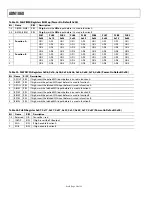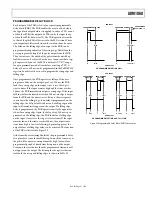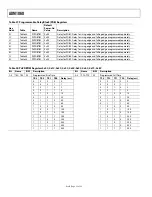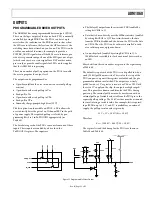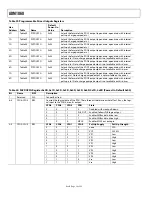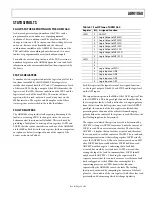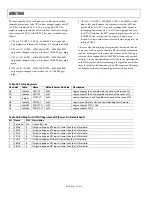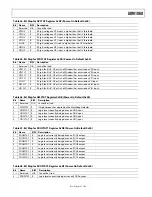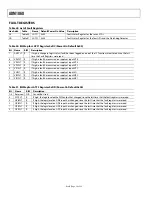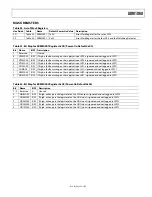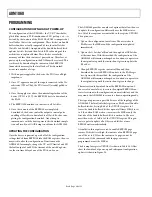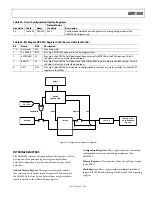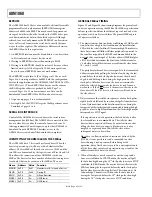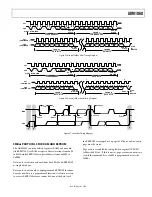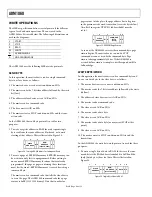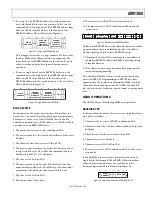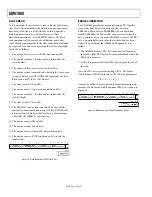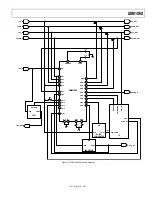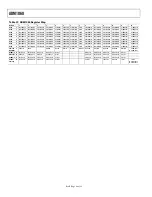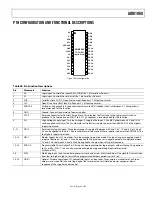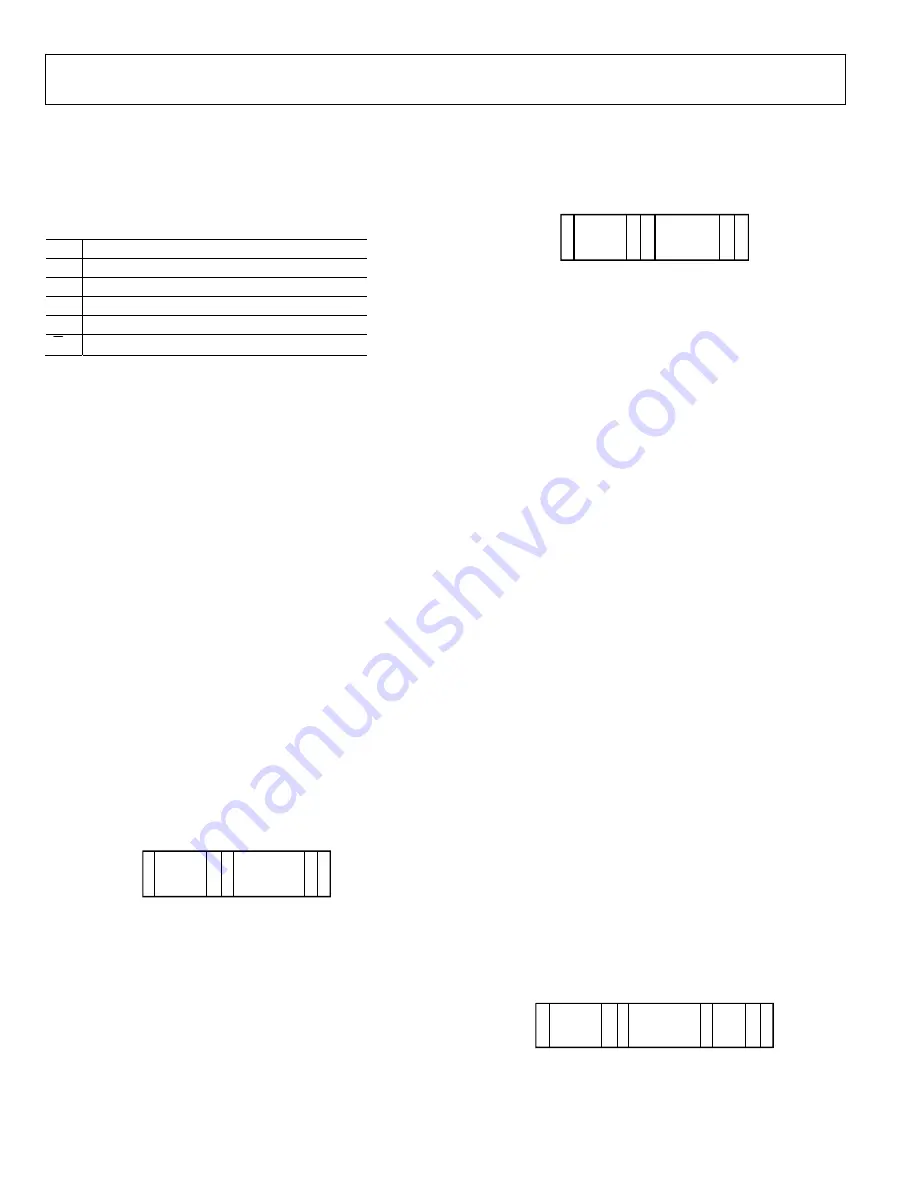
ADM1060
Rev. B | Page 44 of 52
WRITE OPERATIONS
The SMBus specification defines several protocols for different
types of read and write operations. The ones used in the
ADM1060 are discussed below. The following abbreviations are
used in the diagrams:
S START
P STOP
R READ
W WRITE
A ACKNOWLEDGE
A
NO ACKNOWLEDGE
The ADM1060 uses the following SMBus write protocols:
SEND BYTE
In this operation, the master device sends a single command
byte to a slave device, as follows:
1.
The master device asserts a start condition on SDA.
2.
The master sends the 7-bit slave address followed by the write
bit (low).
3.
The addressed slave device asserts ACK on SDA.
4.
The master sends a command code.
5.
The slave asserts ACK on SDA.
6.
The master asserts a STOP condition on SDA and the trans-
action ends.
In the ADM1060, the send byte protocol is used for two
purposes:
1.
To write a register address to RAM for a subsequent single
byte read from the same address or block read, or to write
starting at that address. This is illustrated in Figure 28.
S
W
A
SLAVE
ADDRESS
RAM
ADDRESS
(0x00 TO 0xDF)
P
A
1
2
3
4
5 6
Figure 28. Setting a RAM Address for Subsequent Read
2.
To erase a page of EEPROM memory. EEPROM memory can
be written to only if it is unprogrammed. Before writing to
one or more EEPROM memory locations that are already
programmed, the page or pages containing those locations
must first be erased. EEPROM memory is erased by writing a
command byte.
The master sends a command code that tells the slave device
to erase the page. The ADM1060 command code for a page
erasure is 0xFE (1111 1110 binary). Note that in order for
page erasure to take place, the page address has to be given
in the previous write word transaction (see write byte below).
Also, Bit 3 in register UPDCFG (address 0x90) must be
set to 1.
S
W A
A P
1
2
3
4
5
6
SLAVE
ADDRESS
COMMAND
BYTE
(0xFE)
Figure 29. EEPROM Page Erasure
As soon as the ADM1060 receives the command byte, page
erasure begins. The master device can send a STOP
command as soon as it sends the command byte. Page
erasure takes approximately 20 ms. If the ADM1060 is
accessed before erasure is complete, it will respond with No
Acknowledge.
WRITE BYTE/WORD
In this operation the master device sends a command byte and
one or two data bytes to the slave device, as follows:
1. The master device asserts a start condition on SDA.
2. The master sends the 7-bit slave address followed by the write
bit (low).
3. The addressed slave device asserts ACK on SDA.
4. The master sends a command code.
5. The slave asserts ACK on SDA.
6. The master sends a data byte.
7. The slave asserts ACK on SDA.
8. The master sends a data byte (or may assert STOP at this
point).
9. The slave asserts ACK on SDA.
10. The master asserts a STOP condition on SDA to end the
transaction.
In the ADM1060, the write byte/word protocol is used for three
purposes:
1. To write a single byte of data to RAM. In this case the com-
mand byte is the RAM address from 0x00 to 0xDF and the
(only) data byte is the actual data. This is illustrated in
Figure 30.
S
A
A P
1
2
3
4
5
6
7
8
SLAVE
ADDRESS
RAM
ADDRESS
(0x00 TO 0xDF)
DATA
W A
Figure 30. Single Byte Write to RAM

